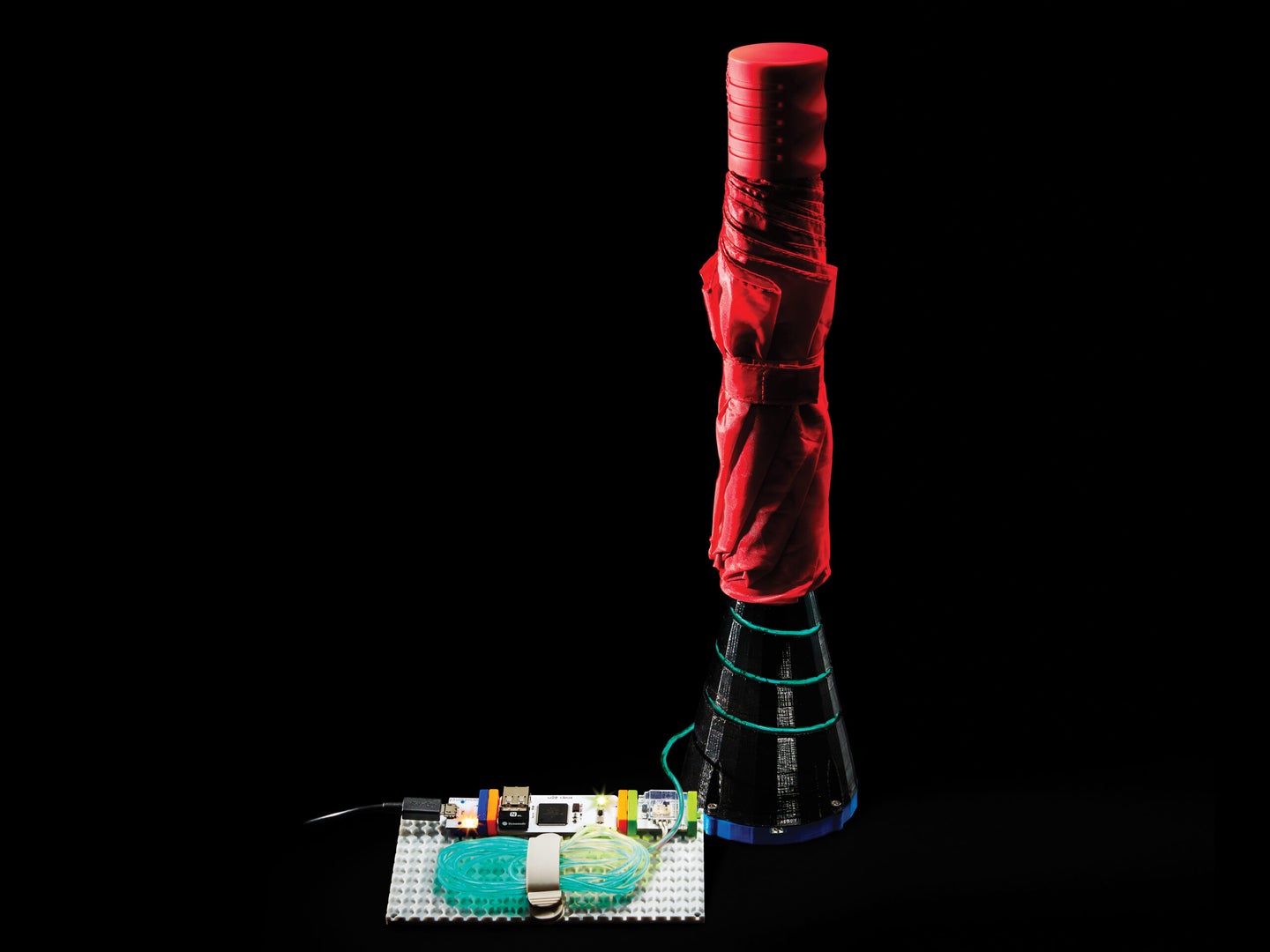Build An Umbrella Stand That Outsmarts The Rain
Never get caught in a surprise shower again

It’s all too easy to forget an umbrella on a rainy day. But this is the 21st century—shouldn’t your umbrella remind you when it’s needed? Well, yes, it should. And it can do that via a stand that lights up when the forecast calls for rain.
There are several ways to make a smart umbrella stand, but the easiest uses littleBits modules, miniature circuit boards that snap together with magnets. The stand communicates with an online weather forecast through the Internet-connected cloudBit module and a service called IFTTT (short for “If This Then That”), which helps Web applications talk to one another. For example, if Yahoo Weather predicts rain, then IFTTT will send a command to the cloudBit, telling the electroluminescent wire on the stand to illuminate.
Although you could just wrap the littleBits light wire around a prefabricated umbrella stand, it’s more fun to customize a 3D-printed version. To take the project one step further, modify the open-source designs. Try adding a littleBits pressure sensor to the stand so it can detect an umbrella’s presence and ping your phone if you leave the house unprepared.
Stats
Time: 6 hours
Cost: $129
Difficulty: 3/5
Materials
- 3D printer filament (PLA works well)
- 4 M3 hex nuts
- ¼-inch-thick, 3-inch-diameter stainless steel plate
- 4 10mm M3 hex bolts
- Optional: umbrella stand
- Optional: Tape or zip ties
- Mounting board
- littleBits modules: USB power, cloudBit, and light wire
Tools
- 3D printer
- Wire cutters
- Allen wrench for M3 bolts
- Wi-Fi network
Instructions

Materials
If you have an umbrella stand, skip to step 3. Otherwise, download and print the 3D design files for the two parts of the stand.
On the top part, use wire cutters to clip the support structures off the spiral. This will help you install the light wire. On the base part, pressure-fit the nuts and insert the steel plate. The plate’s weight will keep the stand steady when holding large umbrellas. Bolt the base to the top, and pop the light wire into the spiral.
On a pre-made stand, just wrap the wire around it and fasten with tape or zip ties.
Snap the littleBits modules onto the mounting board, with USB power feeding into the cloudBit and then the light wire.
Follow the instructions that came with the cloudBit to connect it to Wi-Fi and register it.
Create an account at IFTTT.com. Add the littleBits channel and make sure your cloudBit shows up.
Create a new “recipe” on IFTTT. For “This,” select the “Weather” channel. Pick “Current Condition Changes To” and select “Rain” to activate the recipe under rainy conditions.
For “That,” select the “littleBits” channel. Pick “Set Output Level” for the option. Choose your cloudBit, and set the level to 100 and the duration to “Forever.”
Repeat steps 7 and 8, but choose “Clear” for the weather condition and zero for the output level. This tells the light wire to turn off on clear days.
For links to advanced instructions, design files, and more, visit raincloud.jeremyblum.com.
This article was originally published in the April 2015 issue of Popular Science, under the title “An Umbrella Stand That Outsmarts The Rain.”